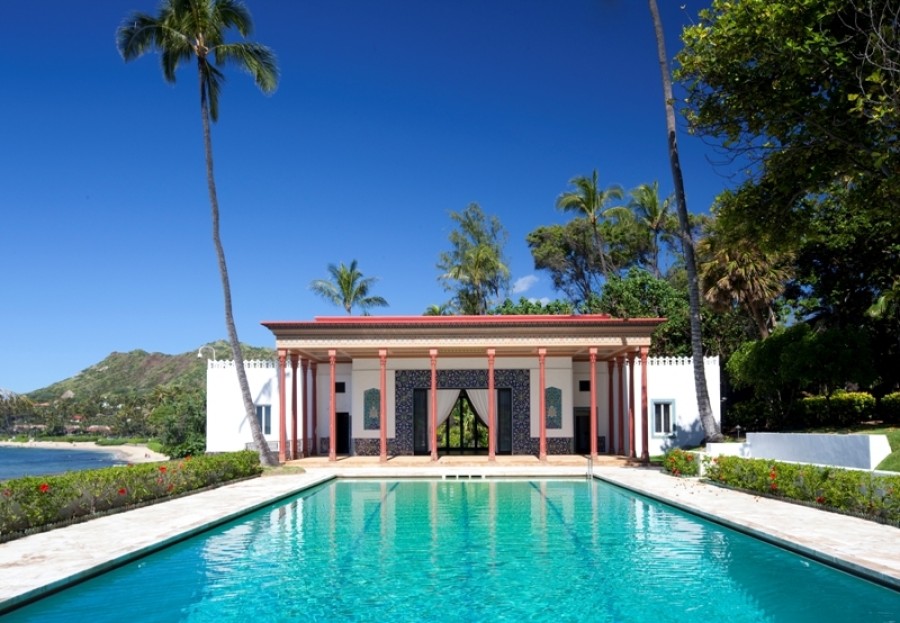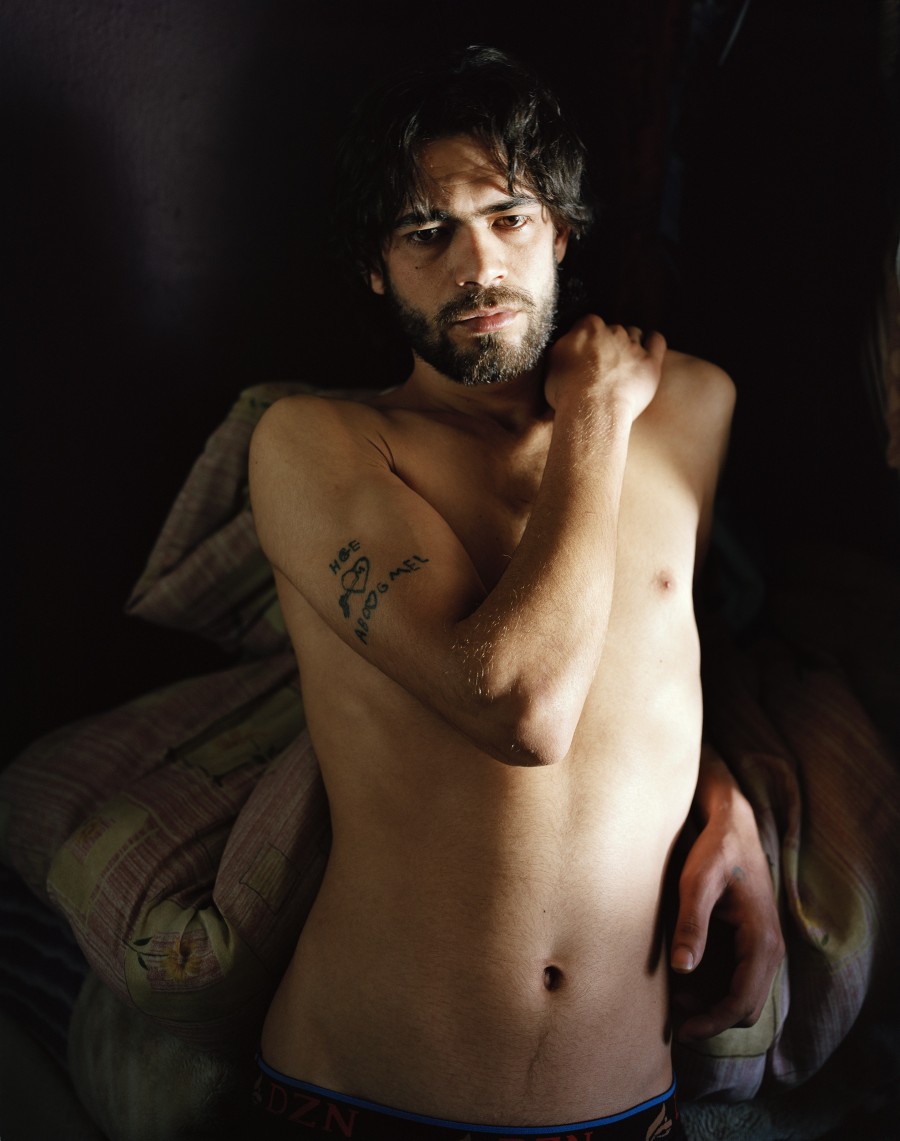How does the Western hemisphere view the Islamic world? Some of our knowledge is informed by headlines and news reports, some by blockbuster movies. Some is surmised from the artwork that materializes from the region, and later dominates the international art market. Many of these sources, however, present a warped view of the realm, tainted by distance and difference.

Heiress Doris Duke collected Islamic art objects from all over the world and displayed them at her home in Hawaii (now operated by the Doris Duke Foundation for Islamic Arts). Pieces from her collection will go on view at the L.A. Municipal Art Gallery in October. (Tim Street-Porter / Department of Cultural Affairs)
Los Angeles/Islam Arts Initiative offers an alternative approach to understanding (or at least beginning to see) the so-called Islamic world, using art as a vessel. The first of its kind, LA/IA will bring together 30 cultural institutions from around L.A., focusing on both contemporary and traditional Islamic arts. The initiative isn't rigidly fastened to the religion of Islam; it features art by non-Muslim artists from Muslim-dominant countries, as well as work by Muslims creating art in non-Muslim dominant countries, and work by artists culturally influenced by Islam.
"There are people who are Christian, Jewish, Sikh but fall under the umbrella of what Western art historians categorize as Islamic art," LA Islam Arts Initiative Program Manager Ami Motevalli explained to The Huffington Post. "We were excited to bring all these voices together and explore these multiplicities. We weren't actually looking at the spiritual side of Islam."
The citywide celebration is comprised of two main parts. First, there's "Doris Duke’s Shangri La," exploring the massive collection of Islamic artworks owned by tobacco heiress Doris Duke, including ceramics, textiles, jewelry, paintings, tile panels and a massive home and garden. Secondly, a contemporary art exhibition entitled Baghdad-born Rijin Sahakian, entitled "Shangri La: Imagined Cities," provides critical context to the former, questioning what we mean when we think and talk about "Islamic art."

George Awde, Untitled, series of 24 inkjet prints and smaller viewing table of prints, 2007-2014. Image Courtesy of the Artist.
"What I was interested in doing is deflecting this idea of a certain line of questioning or a certain representational show that is so often associated with a group show organized around identity matrixes," Sahakian declared to HuffPost. "One that's organized over this overarching rubric of Islamic arts in terms of what people might expect artists to talk about. Instead of pretending there was any artwork that could answer these questions, I wanted to curate an exhibition that would do away with this line of questioning."
Los Angeles, the site where so many normative, and often false, understandings of Islam are produced, was the perfect space for this exhibition to take place. "Los Angeles has been responsible for the ways much of the world views people from South Asia, North Africa, West Africa, and its diasporas. We understand that a lot of this is contributing to Islamophobia."
Of course, there are also many more positive reasons to select Los Angeles. "L.A. is a ripe environment because these communities exist here; they're part of the fabric. These discussions are happening in very natural ways around the city, but we want to formalize them and bring them to the surface. And explore the aesthetic aspects as well."
Sahakian continued: "The circulation of capital, policing, surveillance, migration -- all these things are converging right now. Hopefully one of the things that becomes clear is that there isn't a differentiation between there and here. Los Angeles and Beirut or Damascus are not totally different. In L.A. all of these worlds have come together, as film and entertainment industries have created imaginary cities and identities of concern. It has determined in certain ways how people see these imagined landscapes of the Middle East. Within the imaginations and aesthetics of each of the works, there is a capacity to find the erasure of distance between these imaginary identities that have been made to seem so different and faraway."
"Shangri La: Imagined Cities" will go on view at Los Angeles Municipal Art Gallery from October 26 to December 28, 2014. See a glimpse of the exhibition beforehand below.
Adrian PaciThe Column2013video stillCourtesy of the artist and kaufmann repetto, Milan
Gelare Khoshgozaran rial & tERROR, 2011, Stereo Video Still Courtesy of the artist
Gelare Khoshgozaran rial & tERROR, 2011, Stereo Video Still Courtesy of the artist
Gelare Khoshgozaran rial & tERROR, 2011, Stereo Video Still Courtesy of the artist
George Awde, Untitled, series of 24 inkjet prints and smaller viewing table of prints, 2007-2014. Image Courtesy of the Artist.
Haig Aivazian, How Great You Are O Son of the Desert!, 2014, video still Image Courtesy of the Artist
Haig Aivazian, How Great You Are O Son of the Desert!, 2014, video still Image Courtesy of the Artist
Mariam Ghani. The Trespassers, video still , 2011 Image Courtesy of the Artist, Photo Credit: Alfredo Rubio
Taysir Batniji, To My Brother, 2012, hand carvings from photographs on paper. Image Courtesy of the Abraaj Group Art Prize. Copyright Jean-Louis Losi, Paris.
Heiress Doris Duke collected Islamic art objects from all over the world and displayed them at her home in Hawaii (now operated by the Doris Duke Foundation for Islamic Arts). Pieces from her collection will go on view at the L.A. Municipal Art Gallery in October. (Tim Street-Porter / Department of Cultural Affairs)
Heiress Doris Duke collected Islamic art objects from all over the world and displayed them at her home in Hawaii (now operated by the Doris Duke Foundation for Islamic Arts). Pieces from her collection will go on view at the L.A. Municipal Art Gallery in October. (Tim Street-Porter / Department of Cultural Affairs)
Heiress Doris Duke collected Islamic art objects from all over the world and displayed them at her home in Hawaii (now operated by the Doris Duke Foundation for Islamic Arts). Pieces from her collection will go on view at the L.A. Municipal Art Gallery in October. (Tim Street-Porter / Department of Cultural Affairs)
Heiress Doris Duke collected Islamic art objects from all over the world and displayed them at her home in Hawaii (now operated by the Doris Duke Foundation for Islamic Arts). Pieces from her collection will go on view at the L.A. Municipal Art Gallery in October. (Tim Street-Porter / Department of Cultural Affairs)
Heiress Doris Duke collected Islamic art objects from all over the world and displayed them at her home in Hawaii (now operated by the Doris Duke Foundation for Islamic Arts). Pieces from her collection will go on view at the L.A. Municipal Art Gallery in October. (Tim Street-Porter / Department of Cultural Affairs)
Heiress Doris Duke collected Islamic art objects from all over the world and displayed them at her home in Hawaii (now operated by the Doris Duke Foundation for Islamic Arts). Pieces from her collection will go on view at the L.A. Municipal Art Gallery in October. (Tim Street-Porter / Department of Cultural Affairs)
Support HuffPost
Our 2024 Coverage Needs You
Your Loyalty Means The World To Us
At HuffPost, we believe that everyone needs high-quality journalism, but we understand that not everyone can afford to pay for expensive news subscriptions. That is why we are committed to providing deeply reported, carefully fact-checked news that is freely accessible to everyone.
Whether you come to HuffPost for updates on the 2024 presidential race, hard-hitting investigations into critical issues facing our country today, or trending stories that make you laugh, we appreciate you. The truth is, news costs money to produce, and we are proud that we have never put our stories behind an expensive paywall.
Would you join us to help keep our stories free for all? Your contribution of as little as $2 will go a long way.
Can't afford to donate? Support HuffPost by creating a free account and log in while you read.
As Americans head to the polls in 2024, the very future of our country is at stake. At HuffPost, we believe that a free press is critical to creating well-informed voters. That's why our journalism is free for everyone, even though other newsrooms retreat behind expensive paywalls.
Our journalists will continue to cover the twists and turns during this historic presidential election. With your help, we'll bring you hard-hitting investigations, well-researched analysis and timely takes you can't find elsewhere. Reporting in this current political climate is a responsibility we do not take lightly, and we thank you for your support.
Contribute as little as $2 to keep our news free for all.
Can't afford to donate? Support HuffPost by creating a free account and log in while you read.
Dear HuffPost Reader
Thank you for your past contribution to HuffPost. We are sincerely grateful for readers like you who help us ensure that we can keep our journalism free for everyone.
The stakes are high this year, and our 2024 coverage could use continued support. Would you consider becoming a regular HuffPost contributor?
Dear HuffPost Reader
Thank you for your past contribution to HuffPost. We are sincerely grateful for readers like you who help us ensure that we can keep our journalism free for everyone.
The stakes are high this year, and our 2024 coverage could use continued support. If circumstances have changed since you last contributed, we hope you’ll consider contributing to HuffPost once more.
Already contributed? Log in to hide these messages.
















